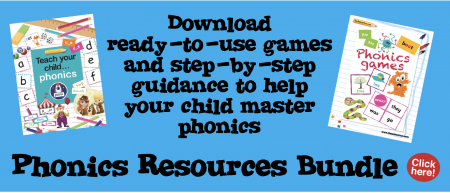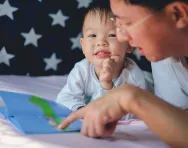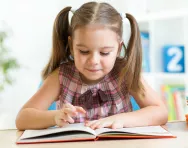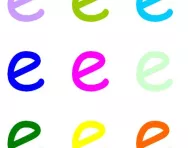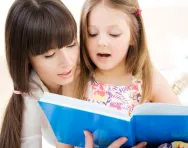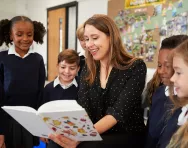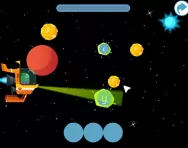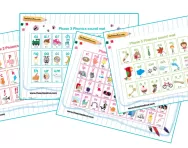Important update from TheSchoolRun
For the past 13 years, TheSchoolRun has been run by a small team of mums working from home, dedicated to providing quality educational resources to primary school parents. Unfortunately, rising supplier costs and falling revenue have made it impossible for us to continue operating, and we’ve had to make the difficult decision to close. The good news: We’ve arranged for another educational provider to take over many of our resources. These will be hosted on a new portal, where the content will be updated and expanded to support your child’s learning.
What this means for subscribers:
- Your subscription is still active, and for now, you can keep using the website as normal — just log in with your usual details to access all our articles and resources*.
- In a few months, all resources will move to the new portal. You’ll continue to have access there until your subscription ends. We’ll send you full details nearer the time.
- As a thank you for your support, we’ll also be sending you 16 primary school eBooks (worth £108.84) to download and keep.
A few changes to be aware of:
- The Learning Journey weekly email has ended, but your child’s plan will still be updated on your dashboard each Monday. Just log in to see the recommended worksheets.
- The 11+ weekly emails have now ended. We sent you all the remaining emails in the series at the end of March — please check your inbox (and spam folder) if you haven’t seen them. You can also follow the full programme here: 11+ Learning Journey.
If you have any questions, please contact us at enquiries@theschoolrun.com. Thank you for being part of our journey it’s been a privilege to support your family’s learning.
*If you need to reset your password, it will still work as usual. Please check your spam folder if the reset email doesn’t appear in your inbox.
Phonics phases explained
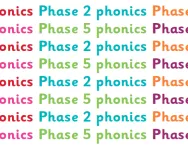
Contents
When your child starts school, phonics becomes a big part of everyday life, transforming them from a non-reader to a child who is capable of reading fluently and spelling (mostly!) accurately by the end of Year 2.
Primary schools follow different phonics schemes, and each takes a slightly different approach to teaching phonics, but it’s common for your child to be taught in a series of phases throughout the Foundation Stage and Key Stage 1.
Phase 1 phonics
Early phonics teaching in pre-school, in Nursery English and at the start of Reception focuses on developing children’s listening skills. ‘Early years environments do a lot of aural work at quite a slow pace, training children in awareness of sounds,’ explains Sara Wernham, a primary school teacher and one of the developers of the Jolly Phonics scheme.
In Phase 1 phonics, children are taught about:
- Environmental sounds
- Instrumental sounds
- Body percussion (e.g. clapping and stamping)
- Rhythm and rhyme
- Alliteration
- Voice sounds
- Oral blending and segmenting (e.g. hearing that d-o-g makes ‘dog’)
Phase 2 phonics
In Phase 2, children begin to learn the sounds that letters make (phonemes). There are 44 sounds in all. Some are made with two letters, but in Phase 2, children focus on learning the 19 most common single letter sounds. ‘These are broken down into smaller sets of about six sounds to make them more achievable for children to learn,’ says Sara.
Although the order in which sounds are taught will depend on which scheme your child’s school follows, usually, they will learn the most commonly used phonemes first, starting with: /s/, /a/, /t/, /i/, /p/, /n/.
By the end of Phase 2 children should be able to read some vowel-consonant (VC) and consonant-vowel-consonant (CVC) words, and to spell them out. They also learn some high frequency ‘tricky words’ like ‘the’ and ‘go.’ This phase usually lasts about six weeks.
Phase 3 phonics
Phase 3 introduces children to the remaining, more difficult and/or less commonly used phonemes. There are around 25 of these, depending on which scheme is followed, mainly made up of two letters such as /ch/, /ar/, /ow/ and /ee/. ‘We need these sounds to be able to read and form useful words,’ says Sara.
Alongside this, children are taught to recognise more tricky words, including ‘me,’ ‘was,’ ‘my,’ ‘you’ and ‘they’. They learn the names of the letters, as well as the sounds they make. Activities might include learning mnemonics (memory aids) for tricky words, practising writing letters on mini whiteboards, using word cards and singing songs like the Alphabet Song.
Phase 3 takes most children around 12 weeks. By the end, they should be able to say the sound made by most, or all, Phase 2 and 3 graphemes, blend and read CVC words made from these graphemes, read 12 new tricky words and write letters correctly when given an example to copy.
Phase 4 phonics
By now, children should be confident with each phoneme. ‘From here on, phonics teaching is about consolidating and refining their knowledge, introducing more spelling patterns and tricky words, and increasing vocabulary,’ Sara says.
In Phase 4 phonics, children will, among other things:
- Practise reading and spelling CVCC words (‘bump', 'nest', ‘belt,’ ‘milk’, etc)
- Practise reading and spelling high frequency words
- Practise reading and writing sentences
- Learn more tricky words, including ‘have,’ ‘like,’ ‘some,’ ‘little’
Children should now be blending confidently to work out new words. They should be starting to be able to read words straight off, rather than having to sound them out. They should also be able to write every letter, mostly correctly. This phase usually takes four to six weeks, and most children will complete it around the end of Reception. 
Phase 5 phonics
Phase 5 generally takes children the whole of Year 1. ‘Here, we start introducing alternative spellings for sounds, like 'igh',” says Sara. ‘Children master these in reading first, and as their fluency develops, we begin to see them using them correctly in spelling.’
Children learn new graphemes (different ways of spelling each sound) and alternative pronunciations for these: for example, learning that the grapheme ‘ow’ makes a different sound in ‘snow’ and ‘cow’.
They should become quicker at blending, and start to do it silently.
They learn about split digraphs (the ‘magic e’) such as the a-e in ‘name.’
They’ll start to choose the right graphemes when spelling, and will learn more tricky words, including ‘people,’ ‘water’ and ‘friend’. They also learn one new phoneme: /zh/, as in ‘treasure.’
By the end of Year 1, children should be able to:
- Say the sound for any grapheme they are shown
- Write the common graphemes for any given sound (e.g. ‘e,’ ‘ee,’ ‘ie,’ ‘ea’)
- Use their phonics knowledge to read and spell unfamiliar words of up to three syllables
- Read all of the 100 high frequency words, and be able to spell most of them
- Form letters correctly
At the end of Year 1, all children are given a Phonics Screening Check to ensure they have mastered the appropriate knowledge.
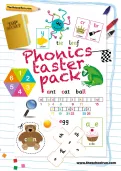
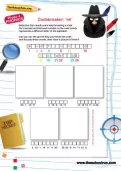
Download a FREE phonics pack
- Phonics phases sound mats
- 5 phonics games
- Plus access hundreds more phonics worksheets when you register for FREE
Phase 6 phonics
Phase 6 phonics takes place throughout Year 2, with the aim of children becoming fluent readers and accurate spellers.
By Phase 6, children should be able to read hundreds of words using one of three strategies:
- Reading them automatically
- Decoding them quickly and silently
- Decoding them aloud
Children should now be spelling most words accurately (this is known as 'encoding'), although this usually lags behind reading. They will also learn, among other things:
- Prefixes and suffixes, e.g. ‘in-’ and ‘-ed’
- The past tense
- Memory strategies for high frequency or topic words
- Proof-reading
- How to use a dictionary
- Where to put the apostrophe in words like ‘I’m’
- Spelling rules
Although formal phonics teaching is usually complete by the end of Year 2, children continue to use their knowledge as they move up the school. ‘The whole aim of phonics teaching is not just to learn the sounds, but to use them as a tool for reading and spelling,’ explains Sara. ‘Everything leads on to independent reading and writing.’
Phonics worksheets to download
Look through our phonics worksheets to help your child put their phonics learning into practice:
Phonics FAQs
Q: What is phonics and why is it important according to the National Curriculum?
A: Phonics is a method of teaching reading that focuses on the relationship between sounds (phonemes) and their spellings (graphemes). The National Curriculum emphasises phonics as a crucial component for developing early reading skills, enabling children to decode words efficiently.
Q: At what age does the National Curriculum recommend starting phonics instruction?
A: The National Curriculum for England recommends that phonics instruction begins in the Early Years Foundation Stage (EYFS), typically when children are around 4 to 5 years old.
Q: How does phonics instruction progress as my child moves from Reception to Year 2?
A: In Reception, children focus on Phases 2-4, learning basic sounds and simple words. In Year 1, they move to Phase 5, dealing with more complex sounds. By Year 2, they work on Phase 6, which aims to improve fluency and spelling through more advanced phonics knowledge.
Q: What is the Phonics Screening Check and why is it important?
A: The Phonics Screening Check is a short assessment conducted in Year 1 to ensure that children are on track with their phonics knowledge. It helps identify those who need additional support to improve their reading skills.
Q: What can I do at home to support my child's phonics learning?
A: Encourage reading regularly, practice phonics sounds, play phonics games and use resources like phonics books and apps. Consistent practice and positive reinforcement are essential.
